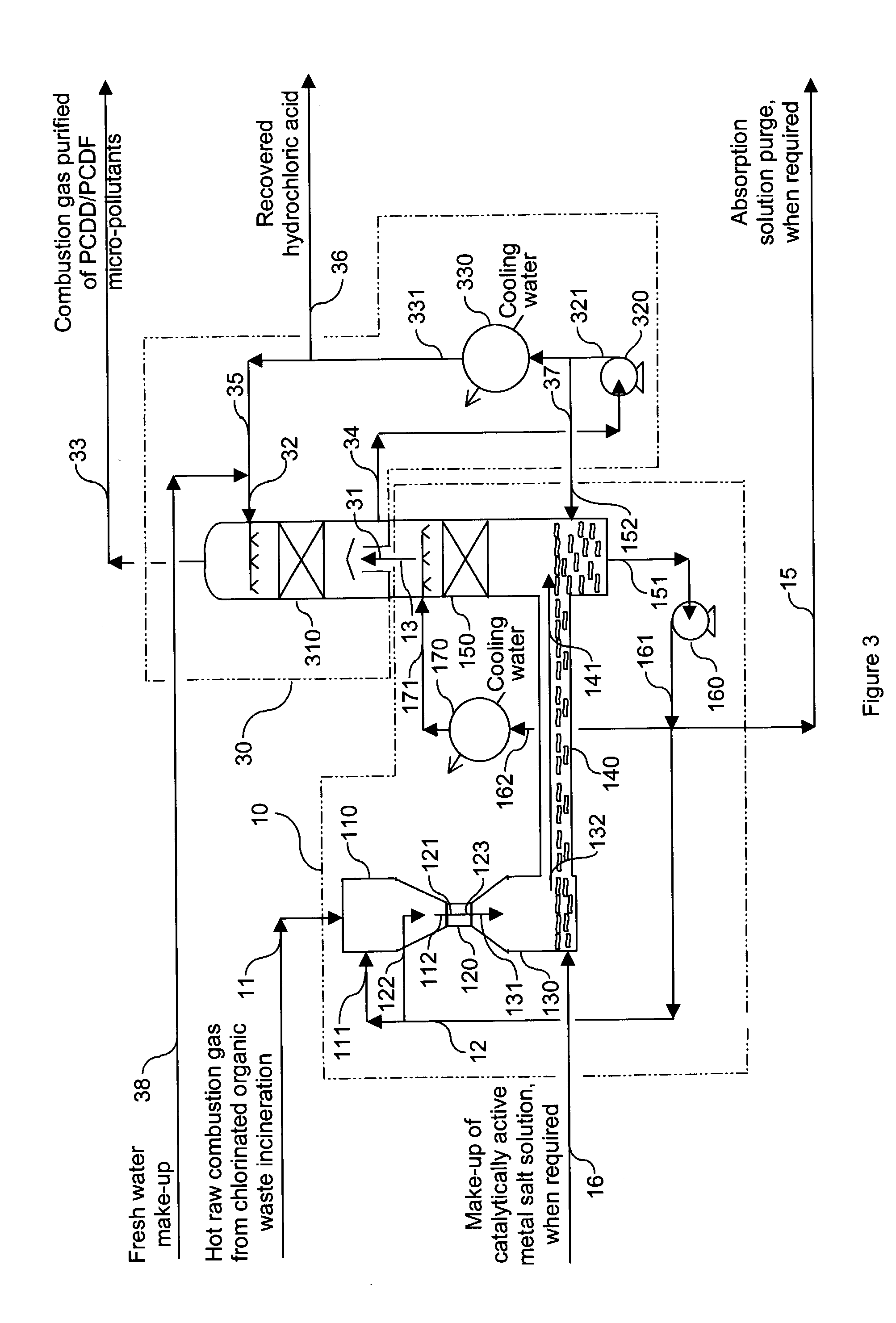Method and apparatus for the removal of PCDD and PCDF micro-pollutants from the combustion gases resulting from the incineration of chlorinated organic wastes
a technology of chlorinated organic waste and combustion gases, which is applied in the direction of separation process, chemistry apparatus and processes, and dispersed particle separation, etc., can solve the problems of increasing the possibility of using landfill as a disposal method, the necessity of alternative, and the most challenging and costly problems that incinerator designers and operators must face. to achieve the effect of no additional operating costs
- Summary
- Abstract
- Description
- Claims
- Application Information
AI Technical Summary
Benefits of technology
Problems solved by technology
Method used
Image
Examples
Embodiment Construction
[0029] FIG. 1A shows the main feature of the invention, i.e. the characteristic that the incineration combustion gases ICG (11) are treated in a multistage treatment unit MTU the outputs of which are:
[0030] the purified combustion gases PCG (33);
[0031] the reactants R1 . . . Ri obtained from the treatment of ICG and recycled back to MTU as pollutant removal agents. Accordingly said removal agents are extracted from ICG and fed back to MTU like an electronic feed-back (push-pull) amplifier.
[0032] FIG. 1B is a block diagram illustrating a method especially adapted for application to an incineration process scheme which includes a wet scrubbing section for the removal from the raw combustion gases ICG of heavy metals and hydrochloric acid gas (HCl). The multistage treatment unit MTU comprises three stages, each stage receiving at least one recycled product from the output of itself or of a subsequent stage.
[0033] The hot, raw combustion gases coming from the combustion section of an in...
PUM
 Login to View More
Login to View More Abstract
Description
Claims
Application Information
 Login to View More
Login to View More - R&D
- Intellectual Property
- Life Sciences
- Materials
- Tech Scout
- Unparalleled Data Quality
- Higher Quality Content
- 60% Fewer Hallucinations
Browse by: Latest US Patents, China's latest patents, Technical Efficacy Thesaurus, Application Domain, Technology Topic, Popular Technical Reports.
© 2025 PatSnap. All rights reserved.Legal|Privacy policy|Modern Slavery Act Transparency Statement|Sitemap|About US| Contact US: help@patsnap.com



